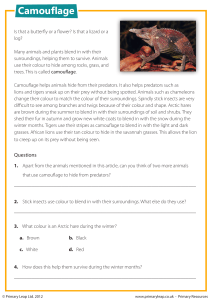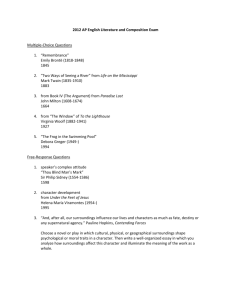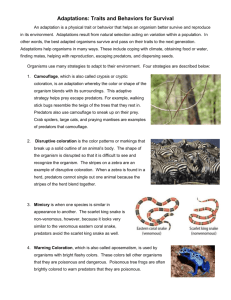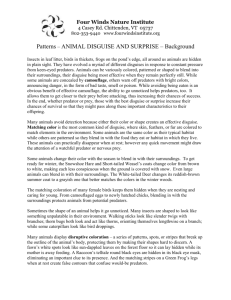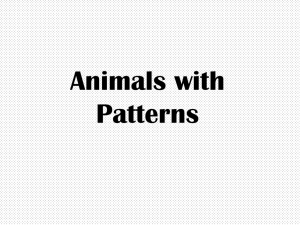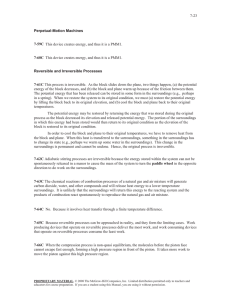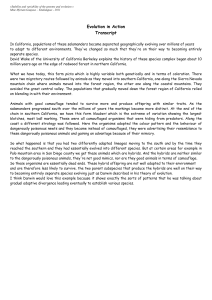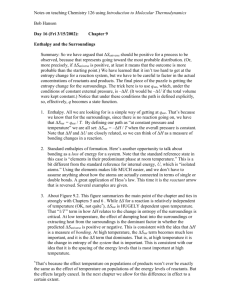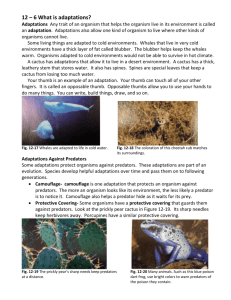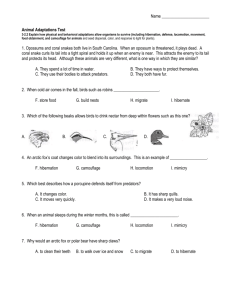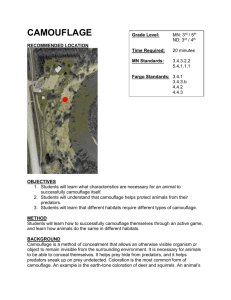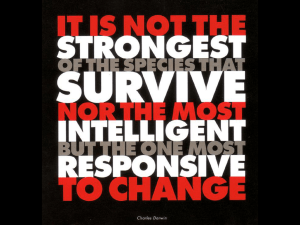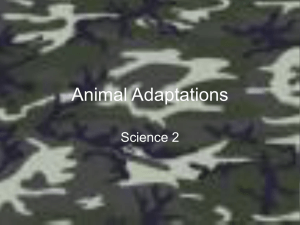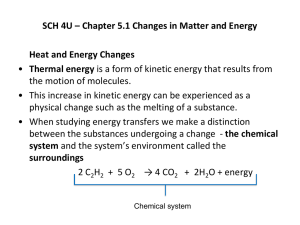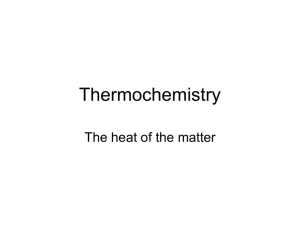Protective Resemblance - fourthgradeteam2012-2013
advertisement
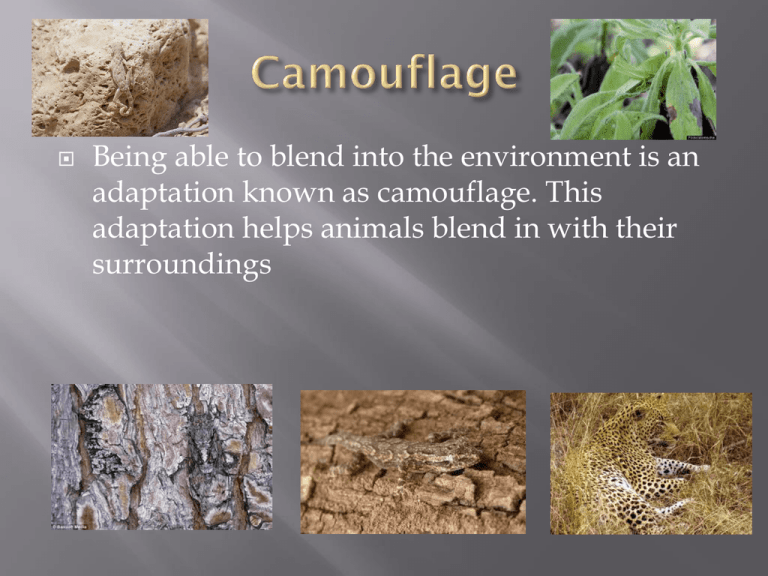
Being able to blend into the environment is an adaptation known as camouflage. This adaptation helps animals blend in with their surroundings Protective resemblance is another form of camouflage. This is when an animal looks almost identical to something in its surroundings. For example, a walking stick looks like a twig on trees or shrubs. When it is resting, it has the same color, shape, and position as a twig. Protective Coloration is when an animal has the same color as its surroundings. Their camouflage makes it hard for enemies to single out individuals. Mimicry allows one animal to look, sound, or act like another animal to fool predators into thinking it is poisonous or dangerous. Warning coloration is when an animal has brightly colored body colorings, and they do not blend with their surroundings. The bright colors warn predators to stay away. For example, the lion fish has brightly striped fins with poisonous spines that it displays to would-be attackers.
